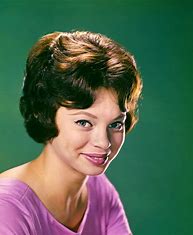Introduction
Juliet Prowse was a renowned dancer, actress, and singer who made a name for herself in Hollywood during the 1960s. Her unique style and captivating performances made her a popular figure in the entertainment industry. In this blog post, we will delve into her life, including her height, ethnicity, and legacy.
Early Life and Ethnicity

Juliet Prowse was born on September 25, 1936, in Bombay, India. Her father was a British army officer, and her mother was a South African-born Jewish woman. This makes Juliet Prowse of mixed ethnicity, with a British and Jewish background. Her family moved to South Africa when she was still a child, and it was there that she discovered her passion for dancing. She began taking ballet lessons at the age of four and later studied other forms of dance, including tap and jazz.
Despite her mixed ethnicity, Juliet Prowse faced discrimination in the entertainment industry due to her skin color. She was often labeled as the “half-black” dancer and was not given equal opportunities as her white counterparts. However, she persevered and continued to work hard, eventually becoming a successful performer.
Height and Appearance
Juliet Prowse was known for her striking appearance, which included her height. She stood at 5’11” (180 cm), making her taller than most women in Hollywood at the time. Her height was often a topic of discussion, and she was even referred to as the “long-legged beauty.” Her tall frame gave her a unique advantage in her dance performances, as she was able to create long, flowing lines with her movements.
In addition to her height, Juliet Prowse was also admired for her stunning looks. She had a slim figure, with long legs and a graceful posture. Her beauty and elegance made her a popular model and spokesperson for various brands, including Max Factor and Revlon.
Relationship with Frank Sinatra
Juliet Prowse’s career was not only defined by her talent but also by her romantic relationships. She was famously linked to Frank Sinatra, who was one of the biggest stars in Hollywood at the time. The two met while working on a film together, and their chemistry was undeniable. They began a tumultuous relationship, which lasted for several years.
Despite their passionate love affair, Juliet Prowse and Frank Sinatra’s relationship was not meant to be. They eventually parted ways, and Juliet Prowse went on to marry three times and have two children.
Legacy and Death
Juliet Prowse’s legacy in the entertainment industry is undeniable. She was a talented performer who captivated audiences with her dance routines and acting skills. Her unique style and beauty made her a popular figure in Hollywood during the 1960s. She appeared in several films and television shows, including “Can-Can,” “G.I. Blues,” and “The Ed Sullivan Show.”
Unfortunately, Juliet Prowse’s life was cut short when she passed away on September 14, 1996, at the age of 59. She had been battling pancreatic cancer for several years. Despite her untimely death, she will always be remembered as a talented performer who broke barriers in the entertainment industry.
Conclusion
Juliet Prowse was a trailblazer in the entertainment industry, who overcame discrimination and adversity to become a successful performer. Her unique style and captivating performances made her a popular figure in Hollywood during the 1960s. Her legacy lives on, and she will always be remembered as a talented dancer, actress, and singer.
FAQ
What was Juliet Prowse’s height?
Juliet Prowse was 5 feet 11 inches tall.
What was Juliet Prowse’s ethnicity?
Juliet Prowse was of South African descent, with her mother being English and her father being Jewish.
What is Juliet Prowse’s legacy?
Juliet Prowse was a dancer, actress, and singer who became known for her performances on stage and screen. She starred in several films and TV shows, including “Can-Can” and “G.I. Blues,” and was known for her high kicks and glamorous style. She also appeared on Broadway and in Las Vegas shows. Her legacy includes inspiring future generations of dancers and performers, and her contributions to the entertainment industry.



